Archaeology & History
French Archaeologists Excavate a 600-Year-Old Castle Beneath a Historic Town
The elaborate structure encompassed a defensive tower, a moat, drainage pipes, and several staircases.
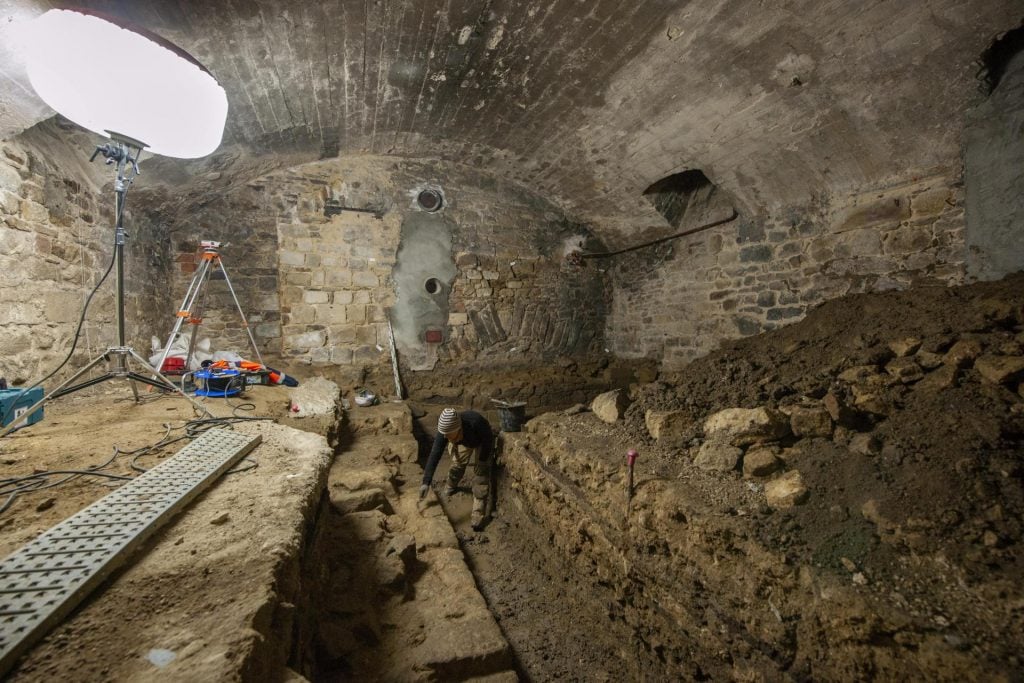
It was no secret that Hôtel Lagorce in Vannes, a historic town in northwestern France, was built on top of a medieval castle. What archaeologists didn’t realize was the remarkably good condition that the 14th-century structure was in.
For starters, Hôtel Lagorce is something of a misnomer. Also known as Château de l’Hermine, it was the residency for the Dukes of Brittany through the 18th century. After falling into disrepair, a grand private mansion was built on the site. Since the 19th century, it’s been the property of the state, serving variously as an artillery school, treasury, and the home for Brittany’s cultural department.
“We thought it had been completely destroyed in the 18th century by the construction of a private mansion,” lead archeologist Rozenn Battais said over email. “It was a great surprise to find the castle’s stairs, moldings, latrines and a mill.”
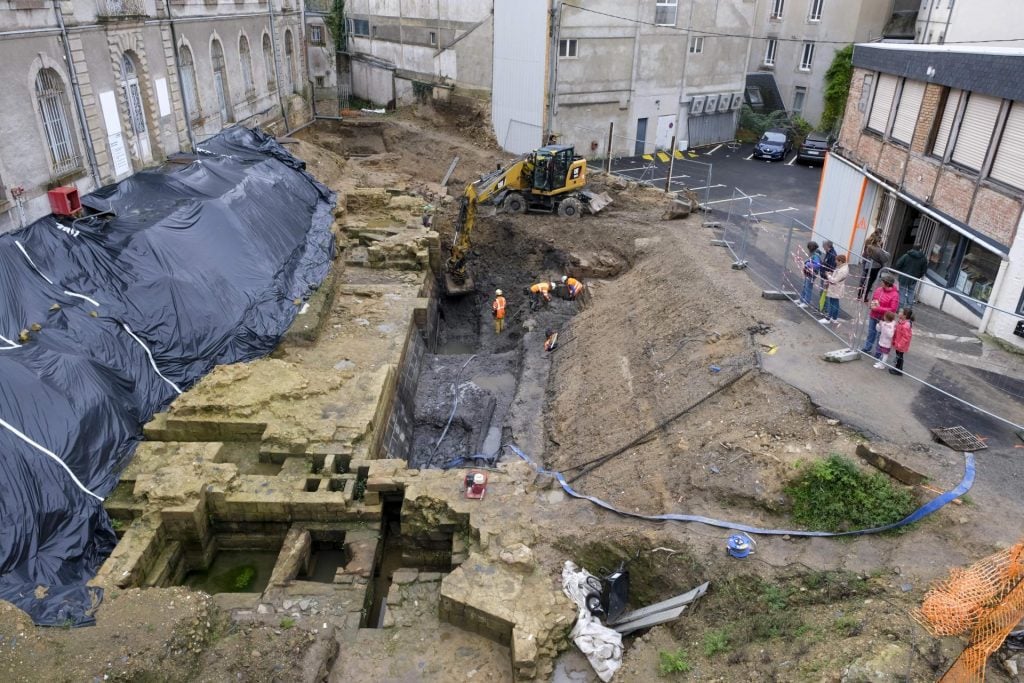
Excavation of a moat in Vannes, Brittany. Photo: Emmanuelle Collado, Inrap.
Ahead of construction on a fine arts museum, Inrap, France’s national institute for archeological research, excavated the site’s courtyard. They were able to determine the scale and layout of the castle that was built by the Duke of Brittany Jean IV in the 1380s. It once boasted two large towers that rested on top of wall and overlooked a surrounding moat, a so-called “porch-castle” design in similar to Château de Suscinio, a coastal castle 15 miles south.
Beneath a thick embankment, archaeologists found two stories of a well-preserved castle and evidence that it was once three or four stories high. The ground floor measured 140 feet in length and 55 feet in width, and had walls 20 feet thick.
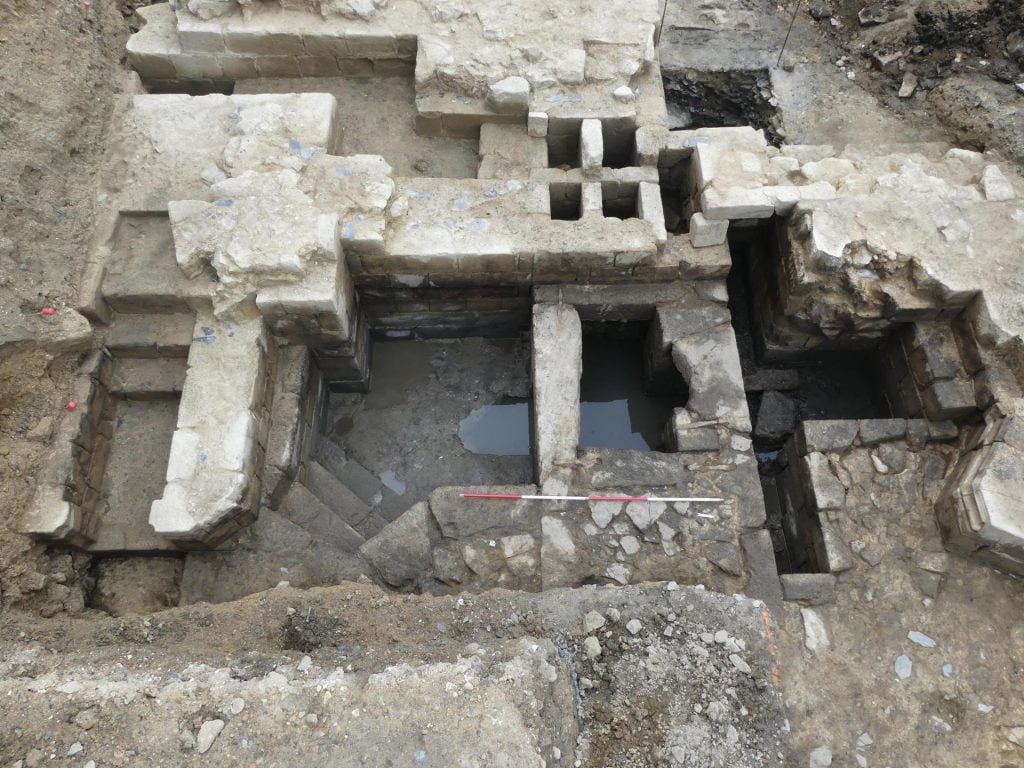
The location of the mill at the castle. Photo: Emmanuelle Collado, Inrap
Built as a means of establishing the Duke’s regional dominance, the structure was coherent in design and material—a stone is even marked out with a rough building plan. Altogether, the high level of organization pointed to a construction that took place in a single phase, a significant outlay in finances and human labor.
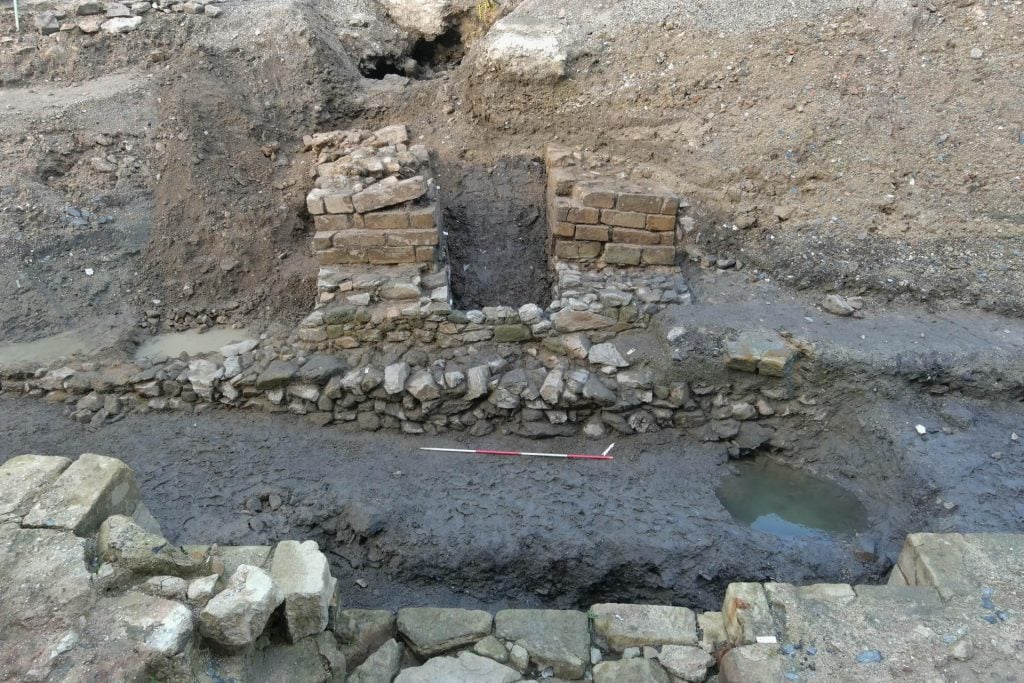
The Remains of the bridge that connected the castle to the town. Photo: Rozenn Battais, Inrap.
In structural terms, archaeologists found an extensive ground floor, the remnants of a defensive tower, a moat, a set of latrines, drainage pipes, and several staircases, one of which was ceremonial. One aspect that particularly intrigued Inrap’s researchers was a canal that ran through the structure and powered a mill. They uncovered the site at which the wheel was inserted into the masonry as well as the grill used to control the flow of water from the Marle River.
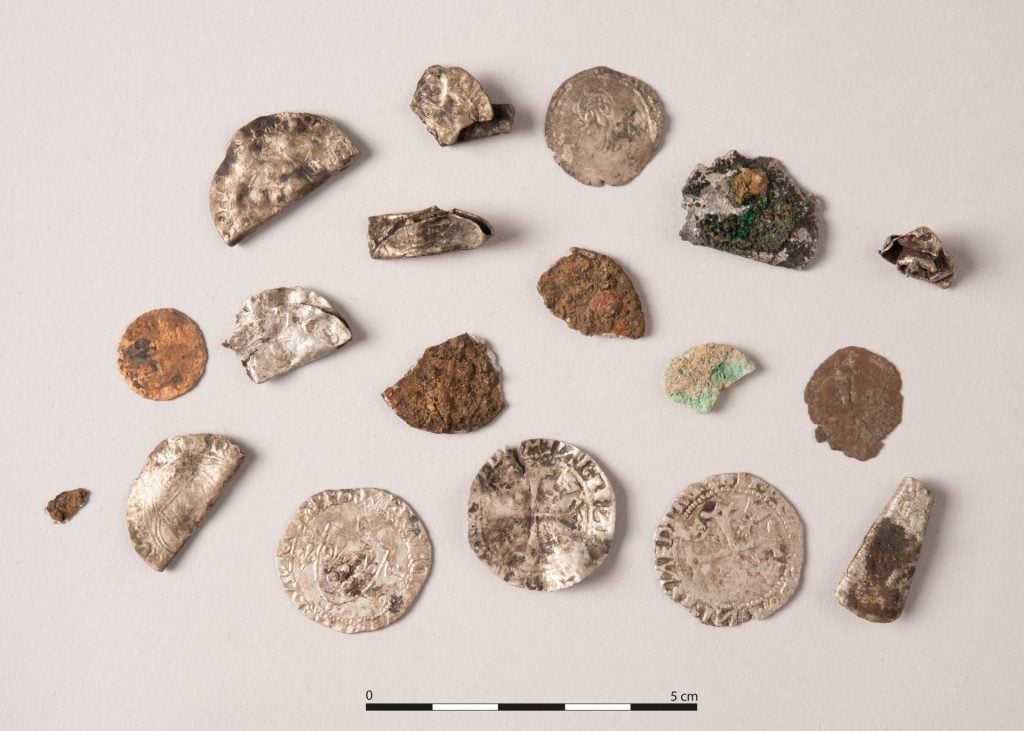
Collection of coins discovered in castle’s mill. Photo: Emmanuelle Collado, Inrap.
The first phase of archaeological work began in early 2023 with a subsequent excavation launched in the fall. This latter phase included searching the site’s latrines and drainage pipes, where the team found coins, jewelry, cooking utensils (such as pots and frying pans), as well as wooden bowls and barrels.
A further excavation of the moat uncovered everyday items including pins, clothing buckles, keys, and padlocks. The items were well-preserved on account of the high levels of humidity in the air and soil.





